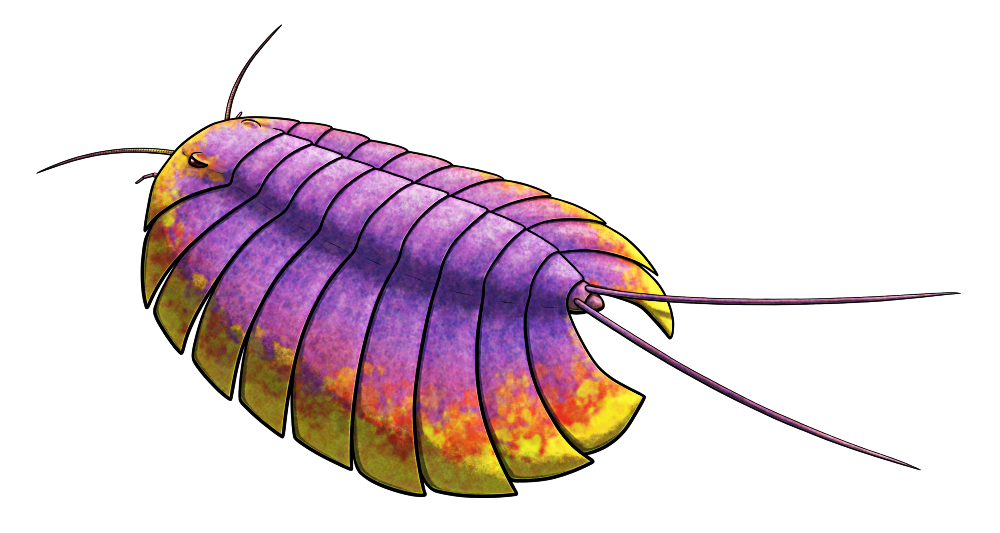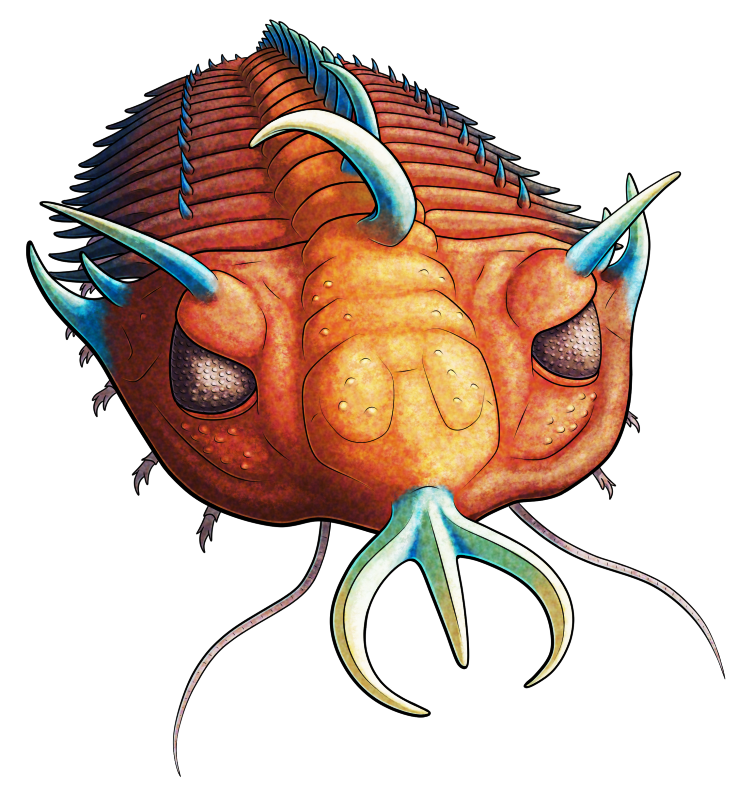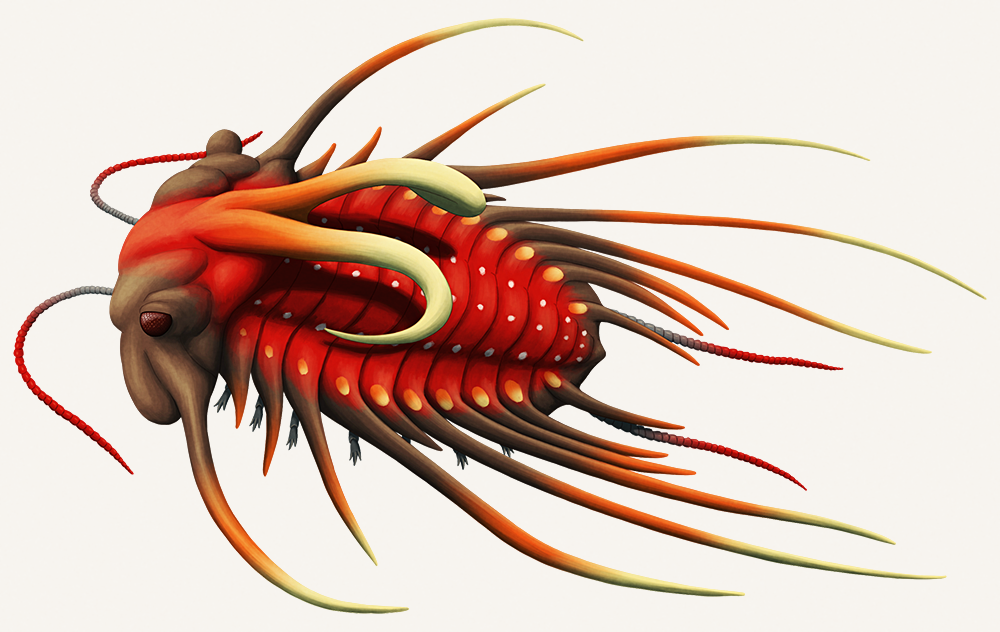Tardisia broedeae was a small arthropod recently discovered in the 308-million-year-old Late Carboniferous Mazon Creek fossil beds in Illinois, USA.
Its anatomy has distinctive features of vicissicaudatans (close relatives of the trilobites), but its presence in Mazon Creek makes it by far the youngest known member of this group – indicating a previously-unknown ghost lineage of around 100 million years, and inspiring its name based on the time-travelling TARDIS in Doctor Who.
About 1.5cm long (~0.6″), Tardisia had an oval segmented body ending in a pair of pointed “tail” appendages. It also appears to have been eyeless, although some vicissicaudatans had eyes on their undersides so this might just be an artifact of preservation.
Continue reading “Tardisia”



